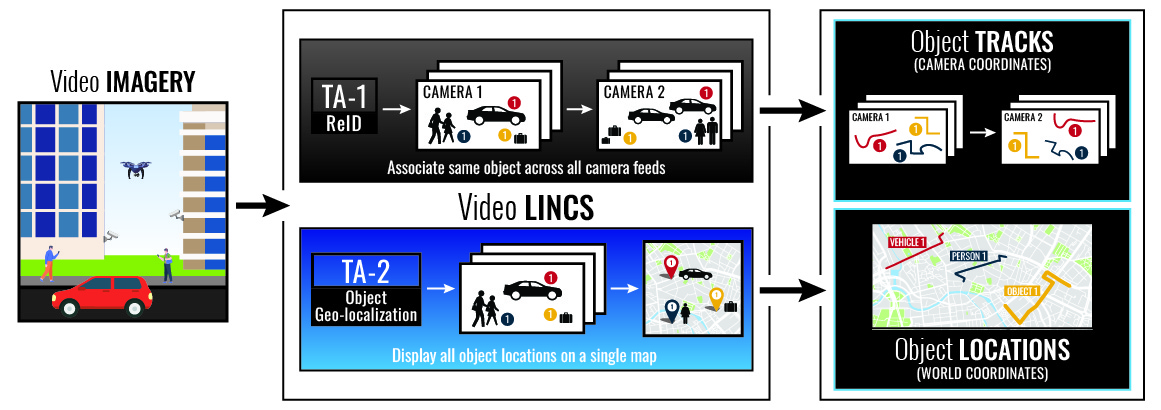INTELLIGENCE VALUE
The Video LINCS program aims to develop re-identification methods that autonomously associate objects across diverse, non-collaborative, video sensor footage, to distill raw pixel data into spatio-temporal motion vectors, providing the ability to analyze these patterns for anomalies and threats.
SUMMARY
The goal of the Video LINCS program, is to research and develop novel capabilities to autonomously re-identify objects across diverse video sensor collections and map all objects to a common reference frame. Re-identification (reID) is the process of matching the same object across a video collection, to determine where the object appears throughout the video. Video LINCS will research approaches that will facilitate autonomous reID in an open-world setting where there is no advance knowledge of the sensors, scene, content, or video collection geometries. ReID technologies will initially be developed for specific object classes that are known in advance, such as people and vehicles, and ultimately extend to all objects in the video footage without advance knowledge of specific object types. The capability to autonomously remap object locations from individual camera reference frames to a single common reference frame, nominally a geo-reference frame (geo-localization), will also be developed.
The program is planned to be a 48-month, three phase effort. During the 18-month Phase 1, reID will be developed within videos from similar sensor collection geometries and geo-localization will be performed when camera poses are known. During the 18-month Phase 2, reID will be developed across different types of videos (such as between aerial drone and ground CCTV video sensor footage), and camera location will be provided without orientation. In the final 12-month Phase 3, a generic object reID capability will be developed, and only approximate camera location will be available.

PROPOSERS' DAY INFORMATION
Video LINCS Proposers' Day Registration Site

